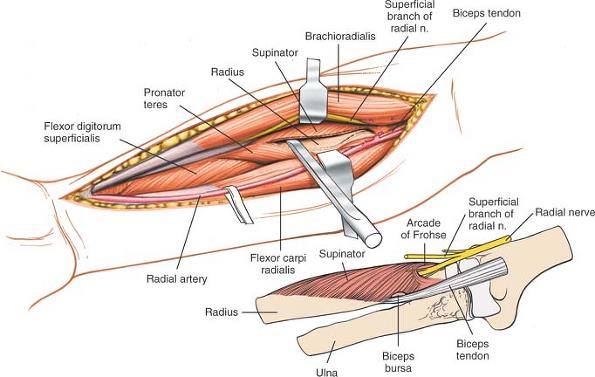To gain exposure to the proximal radius in a classic volar Henry approach, the radial artery is retracted medially and the supinator muscle should be elevated and retracted laterally with the forearm in supination.
The radial artery runs with the superficial radial nerve deep to the brachioradialis in the proximal radius and is retracted medially in the classic volar Henry approach. Cauterization of branches to the brachioradialis is necessary for mobilization. The supinator muscle overlies the volar proximal radius and is retracted laterally along with the posterior interosseous nerve (PIN). To minimize the risk of neural injury, the forearm is supinated because this displaces the PIN dorsally and away from the plane of dissection. Failure to supinate the forearm and hasty dissection risks PIN injury.
